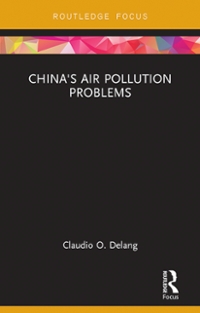Demand, supply, and elasticity are the cornerstones around which Microeconomics are built. On the other hand, GDP, unemployment and inflation are critical concepts for Macroeconomics.
Find an article concerning demand and supply in a popular news media source (i.e., New York Times especially the Business Day section, Wall Street Journal, Economist, etc.).
Post your results giving the source and summarize the article in a couple of paragraphs.In your answer try and establish which paradigm(s) the article best fit.
The images are information about Paradigms in Economics: that you need to read and answer"establish which paradigm(s) the article best fit."
Paradigms in Economics . Neo-Classical - Exclusive Market Based Model of Economics . Adam Smith_ - Wealth of Nations (1776) . Laissez-faire Approach to Economic Affairs . Keynesian - Managed or Blended-Based Model of Economics . John Maynard Keynes - General Theory of Employment, Interest, and Money (1935) . Radical or Political Economy - Internal Contradictions in Capitalism Lead to Socialism . Karl Marx - Capital vols. 1-3 (1855-1888)Equilibrium (1) - NeoClassical Paradigm (i.e., Stable Equilibrium) Emphasis Placed on Individual Behavior Demand = Supply . Harmony of Interests (i.e., Buyers vs. Sellers, Employees vs. Employers, etc.) Markets Clear Excesses (shortage vs. surplus) via the Price Mechanism. Assumes a Microeconomic Purely Competitive Market - No Collusive Behavior The Maximization Principle - Individual Consumer Choice matters were individuals maximize utility (i.e., satisfaction) forming the basis for Demand - Individual Producer Choice matters were individual producers are maximizing profits forming the basis for Supply. Screenshot Equilibrium (2) - Keynesian Paradigm (i.e., Unstable Equilibrium) Demand=Supply but Unemployment Remains - Under-Employment Equilibrium Labor Markets Don't Clear but Product Markets Do Clear - Lack of Effective Demand at the Macroeconomic Level Markets Clear Excesses (shortage vs. surplus) via the Quantity Mechanism (i.e., inventory adjustments) Assumes an Oligopolistic or Non-Competitive Micro-Economic System - Not Competitive but Contested Markets Fiscal Policy Seen as Option to Laissezfaire Screens hot Equilibrium (3) Political Economy Paradigm (i.e., No Equilibrium) - Conflict of Interests Internal Contradictions Lead to Conflict - Economy Never in Equilibrium First Economists to Identify the Business Cycle - Assumes Power Relations over Market Institutions Power Relations (i.e., State Institutions, Legal Framework, etc.) Dominate Market (i.e., Demand=SuppIy) Considerations Emphasis on Social Relations and Institutions Ownership of the Means of Production - Collective Behavior Dominates Individual Behavior Screens hot Povey . Neo-Classical Paradigm Lack of Human Capital (i.e., Schooling, Training, Health) - Individual Choice Time Preferences - No Governmental Programs - Keynesian Paradigm Lack of Human Capital Lack of Opportunities Caused by Discrimination - Discrimination prevents Human Capital Accumulation - Governmental Programs (Comparable Worth, Affirmative Action, Welfare (T ANF) can address the Poverty Issue - Political Economy Paradigm Lack of Opportunities Caused by the Economic System - Lungpen-proletariat (i.e., Permanently Unemployed, Underclass, etc. Screens hot Income and Earnings . Neo-Classical Paradigm Earnings are Related to Productivity - Human Capital (HC) Credentials are a Proxy for Productivity Single Queuing Theory of Income or Earnings Determination - Low Human CapitaI=Low Productivity=Low Earnings - Therefore Individuals with Low Incomes have Few HC Credentials - Keynesian Paradigm Earnings are Related to other Extra-Labor Market Institutions 0 In Addition to HC Credentials are Unions, Labor Laws, Minimum Wage, Discrimination, etc. - Reliance placed on HC credentials have lead to HC overkill. - Political Economy Paradigm Dual or Segmented Labor Markets - Separate queues for Primary and Secondary Jobs. Screens hot Unemployment . NeoClassical Paradigm Individual Choice (i.e., Quit Job) Lack of Human Capital (Structural Unemployment) No Public Intervention (i.e., Unemployment Compensation (UC) Leads to a Moral Hazard) - Market Self-Corrects ' Keynesian Paradigm Market or Institutional Failure (i.e., Layoff) Cyclical Unemployment Caused by Economic Downturn Pubic Intervention Necessary (i.e., UC, Fiscal Policy to Stimulate) - Market Doesn't Self-Correct . Political Economy Paradigm Capitalistic System Creates Unemployment Reserve Army of the Unemployed Public Intervention is to Promote Socialism













